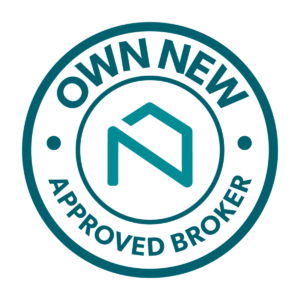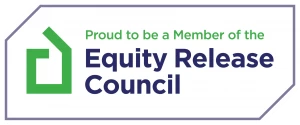Can I Get Equity Release on Any Property?

For many homeowners who are approaching retirement, concerns about money and maintaining a healthy and enjoyable lifestyle becomes a constant concern.
While your most valuable asset is likely to be your own property, it can often feel like a financial anchor in times when money isn’t as accessible. Fortunately, equity release can allow you to tap into the value of your house without having you instantly sell or downsize.
But can you get an equity release loan on just any property?
Regrettably, the short answer is no. There are certain types of properties that may not qualify for equity release, and lenders will have specific criteria that you will need to fit. But don’t worry – we’re here to help.
In this guide, we walk you through exactly what types of homes are eligible, what factors might stop your property’s eligibility, and how to find out if your property is eligible for equity release. Let’s begin.
- What Properties Are Eligible for Equity Release?
- What are the Common Property-Related Barriers to Equity Release?
- What Are the Requirements to Get Equity Release? on Leasehold Property
- Can I Get an Equity Release on Leasehold Flats?
- Can I Get an Equity Release on Buy-to-Let Properties?
- Get In Touch with an Equity Release Broker
What Properties Are Eligible for Equity Release?
To qualify for an equity release loan, each lender will have their own criteria that your property will need to meet. While these guidelines can vary slightly from lender to lender, there is a general standard that your property will likely need to meet.
Typically, properties that have been built with traditional materials – like bricks and mortar – are generally favoured. This is due to the fact that they will offer better structural integrity, and consequently, a better long-term value.
Lenders will also favour homes that are in good – though not necessarily tip-top – condition.
If there are any ongoing issues, such as poor maintenance or visible damage, this could massively impact your application and potentially disqualify your property as a reliable asset.
Here we have provided a list of examples that are commonly accepted by lenders:
- Detached houses
- Semi-detached houses
- Bungalows
- Terraced houses
- Purpose-built flats (in low-rise buildings)
- Modern leasehold flats with long leases
Another key factor to note is ownership. You will need to be the full and permanent owner of the home.
In the case that your home is jointly owned, all owners must apply together and meet the necessary equity release eligibility requirements set out by your chosen lender.
If you’re interested in how to release equity from property, researching whether your home would be eligible for equity release is an excellent place to start.
See What Our Clients Have To Say
What are the Common Property-Related Barriers to Equity Release?
Not all properties are considered equal and suitable by lenders.
As with any mortgage, lenders will want to make sure that their loan will be able to be repaid reliably and in full. In the case of equity release, this will typically happen when your property is sold, either after your death or when you’re moved into permanent care elsewhere. Making sure that your property will be fit for sale is paramount to lenders when evaluating an equity release application.
It goes without saying then that there are some common equity release problems that could arise. These include:
- Age of the property
- Type of property
- Condition of the property
- Unusual or unique property features
In short: Lenders are focused on the future saleability of your property. If for some reason your property would be difficult to sell, they’re naturally less likely to approve an application.
Understanding these potential barriers can help you better prepare, so let’s explore some of the common equity release problems in more detail.
Property Condition and Age
The structural condition of your home is crucially linked to the property’s saleability and value.
If there are signs of serious issues like subsidence, major damp, or roof damage, these structural defects can raise the alarms for lenders, and will likely make your property too risky for an equity release loan.
Similarly, if your property is very old, then the evaluation of its remaining lifetime will directly impact its value.
While routine wear and tear is typically acceptable – lender’s are not expecting a castle or palace – if there are any major deteriorations in an old property, this will likely lead to your property falling short of lenders expectations.
Unacceptable Property Types
There are some property types that are frequently ruled out by lenders. This is due to resale difficulties or legal complexities. These types of properties will usually be:
- Guest houses
- Airbnb rentals
- Farms
- Houseboats
- Retirement properties
- Studio flats (especially those under a certain size threshold)
These types of homes will be either commercially used or have a significant resale difficulty that will disqualify them as viable assets to most equity release lenders.
Additional and Unusual Property Features
There are many modern features that can also affect your properties eligibility for equity release.
For instance, properties with solar panels on the roof – particularly those under leasing agreements – may present legal obstacles for lenders. Beyond solar panels, other features that may raise concern include:
- Properties with spray foam insulation in the loft
- Timber-framed or steel-framed construction
- Homes with shared access rights
- Cladding on the exterior
- Properties with flat or thatched roofs
- Buildings located in high flood-risk or subsidence-prone areas
- Homes in very remote or unusual locations
While these features don’t make a property ineligible for equity release, they may complicate the application process depending on your chosen equity lender.
Listing Status
In the case that your property is a listed building, there could be additional standards set by your lenders that you will have to meet.
Listed buildings come with strict preservation rules, which can sometimes reduce their marketability and value which will be a primary concern for equity release lenders.
What Are the Requirements to Get Equity Release on Leasehold Property?
Firstly, it is absolutely possible to get an equity release loan on a leasehold property, and for the most part, many lenders will still view leasehold properties as valuable assets as their value is predicated upon saleability.
With this being said, with a leasehold property, lenders will scrutinise the terms of your lease closely. Specifically, they will look for a long lease. Usually, they will set a criteria that your lease will need to have a minimum of 75 years and ideally with 100+ years left remaining.
Additionally, ground rent, service charges, and any clauses that might affect property value are also taken into account.
Undoubtedly, leasehold properties do present extra challenges and considerations for equity release eligibility. Working with a trusted broker – like Boon Brokers – can help guide you through the specific equity release criteria that is tied to your leasehold agreement.
Talk to an Adviser About Your Situation – No Obligation
Get In TouchCan I Get an Equity Release on Leasehold Flats?
The short answer: Yes, you can secure an equity release on a leasehold flat.
Equity release on leasehold property – and especially flats – will involve closer scrutiny from lenders as there are more ‘moving parts’ to consider.
This can include how the building is managed, whether remaining lease time, if there are any unresolved disputes with the freeholder, and whether the condition of the flat replicates the condition of the entire building. All of these factors will play a role in the lender’s decision.
A General rule to follow is: If your flat is well-maintained, comes with a long lease, and is located in a well-run development, your property is likely to be able to qualify for equity release.
Can I Get an Equity Release on Buy-to-Let Properties?
While the majority of equity release lenders only offer products for primary residences, there is an increase in equity release options, specifically tailored for landlords.
It is worth noting that while there is an increase, currently only a limited number of lenders currently provide equity release for buy-to-let properties. These equity release products will most commonly be offered through a specialist lifetime mortgage plan.
To be eligible, the buy-to-let property usually needs to be:
- Mortgage-free or have a low outstanding balance
- Generating rental income
- Let on a standard assured shorthold tenancy
- In a good state of repair
The amount of equity you can release from a buy-to-let home will be typically lower than the amount you could release from your main residence. Additionally, interest rates may also be higher.
As the criteria for this type of equity release is more complex, is it always best practice to seek professional advice. A trusted mortgage broker will be able to guide you through your equity release needs and find a lender that matches your requirements.
Get In Touch with an Equity Release Broker
Navigating all the ins and outs of how to release equity from property can feel overwhelming. From the vary rules, differing circumstances, and the unique lender’s criteria.
Thankfully – we’re here to help you.
Here at Boon Brokers, our dedicated mortgage brokers offer fee-free, impartial advice tailored to your personal circumstances.
Contact Boon Brokers today – we can help you understand whether your property is eligible, guide you through the paperwork, and find you the most suitable equity release loan that meets all your needs.
Gerard BoonB.A. (Hons), CeMAP, CeRER
Gerard is a co-founder and partner of Boon Brokers. Having studied many areas of financial services at the University of Leeds, and following completion of his CeMAP and CeRER qualifications, Gerard has acquired a vast knowledge of the mortgage, insurance and equity release industry.







